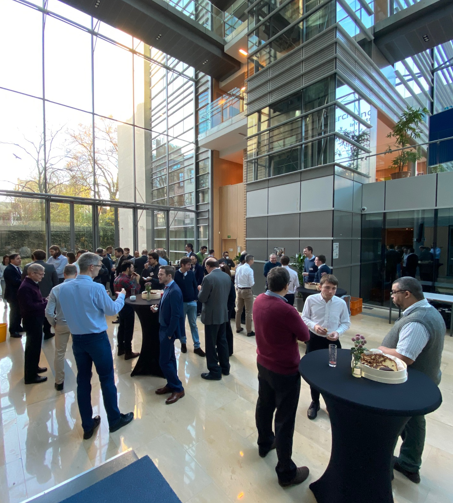19/12/23
SENS4ICE SLD Icing Detection Technologies Final Project Results

The EU-funded project SENS4ICE final results for novel Supercooled Large Droplet (SLD) icing detection technologies were presented to the aircraft icing community at the project's final dissemination event in Brussels on 29 November 2023.
The presentations given at the event are available on the dedicated page of the SENS4ICE website.
The European and international aircraft icing community with major stakeholders represented appreciated considerable progress made in developing, maturing and demonstrating direct, indirect and remote ice detection technologies particularly for SLD icing, including icing wind tunnel testing and flight campaigns in natural icing conditions. The demonstrated novel ice detection technologies facilitate broad and promising applications for many different air vehicle types and several applications including ensuring operational safety and supporting certification activities.
The core outcome of the SENS4ICE project was a hybrid ice detection solution to tackle the challenging task of SLD detection. It combines one or several direct ice detection technologies with the indirect approach to generate quick and robust warnings and continuous ice accretion and flight performance monitoring, also supporting efficiency optimization of ice protection systems. This hybrid ice detection was successfully tested and demonstrated in two flight test campaigns.
It was concluded that the novel technologies successfully demonstrated in SENS4ICE may serve as a game changer to pave the way towards ensuring safety and certification for next generation air vehicles including greener aviation and revolutionary electrical or unmanned or urban air mobility vehicles.
Based on the SENS4ICE lessons learned and knowledge gained it is apparent that further data collection and analysis is imperative for a better physical understanding and further maturing ice detection technologies to an operational level, including a clear path towards certification requirements. Safe aircraft operation in icing conditions is not related solely to atmospheric icing conditions but also ice formation on airframe and furthermore very importantly to the degradation of flight characteristics. This changes for view on any certification path/ definition acceptable means of compliance particularly for new aircraft designs. A collaborative effort involving all relevant stakeholders including industry, research, flight operations and aviation authorities.
